Fine Ceramics, sometimes referred to as "advanced ceramics," are engineered materials that support the development of cutting-edge technology.
How to Make a Fine Ceramic Knife
Advanced Technologies Produce Fine Ceramic Knives with a Razor-Sharp Edge
Granulated powder is filled into a knife-shaped mold and fired.
How to Make a Fine Ceramic Knife

-
Water, raw powder and ceramic milling balls are fed into a mixer-like device called a mill.

-
To create particles of uniform size, with diameters of approximately one micrometer (1 µm or 0.001 mm), raw materials are first mixed into a slurry — a fluid of water and ceramic powder in which the particles are blended.
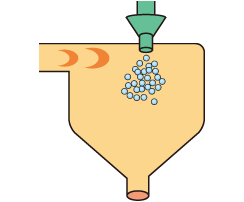
-
A spray dryer dehydrates the raw materials in the slurry to make a granulated powder.

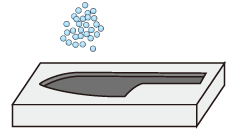
-
The granulated powder is used to fill a knife-shaped mold.
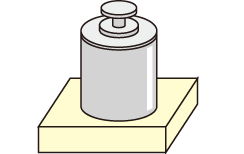
-
The mold is placed under high pressure — 1 ton per cm2 (approx. 12,900 psi) — to solidify the powder into the desired shape.
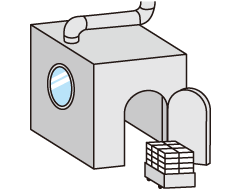
-
The material is then fired and sintered in a kiln, like conventional ceramics, but under precisely controlled temperatures.

-
During the firing process, the ceramic blade shrinks to 75 percent of its original, unfired size, while the volume shrinks by nearly half. These shrinkage rates are carefully calculated during the design process, so the finished size matches the design specifications.

-
The blade is then ground with a diamond wheel to produce a razor-sharp edge.

-
A handle is then attached to complete the process.
The term "Fine Ceramics" is interchangeable with "advanced ceramics," "technical ceramics" and "engineered ceramics." Use varies by region and industry.
People who read this page also read.
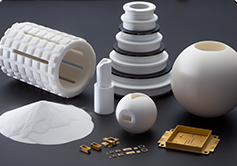
Fine Ceramics Production Process
Fine Ceramics Production Process
A Series of Complex Production Processes Are Used to Make Fine Ceramic Products
A Series of Complex Production Processes Are Used to Make Fine Ceramic Products
Introduction to Fine Ceramics
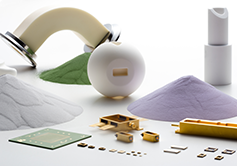
Different Types of Fine Ceramics
Different Types of Fine Ceramics
Wide Variety of Products to Support both Industry and Society
Wide Variety of Products to Support both Industry and Society
Introduction to Fine Ceramics
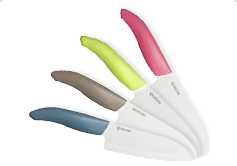
What Makes Fine Ceramics Knives so Special?
What Makes Fine Ceramics Knives so Special?
Four Advantages that Metals Cannot Offer
Four Advantages that Metals Cannot Offer
Learning about Fine Ceramics
If you want to use ceramics in business, click here.
Kyocera's Fine Ceramics products (All websites below open in a separate window.)
Product Category
 Semiconductor / LCD Processing Equipment
Semiconductor / LCD Processing Equipment
 Life / Culture / Industrial Machines
Life / Culture / Industrial Machines
 Wireless Communications
Wireless Communications
 Computer Peripherals
Computer Peripherals
 Environmental Preservation / Renewable Energy
Environmental Preservation / Renewable Energy
 Medical Equipment / Devices
Medical Equipment / Devices
 Single-Crystal Sapphire Products
Single-Crystal Sapphire Products
 Metallized / Vacuum Components
Metallized / Vacuum Components
 Electronics Industry
Electronics Industry
 Heaters
Heaters
 Piezoelectric Ceramics
Piezoelectric Ceramics
Search by Material
 Alumina
Alumina
 Silicon Nitride
Silicon Nitride
 Silicon Carbide
Silicon Carbide
 Sapphire
Sapphire
 Zirconia
Zirconia
 Cordierite
Cordierite
 Yttria
Yttria
 Aluminum Nitride
Aluminum Nitride
 Cermet
Cermet
 Mullite
Mullite
 Steatite
Steatite
 Forsterite
Forsterite
Search by Property/Characteristic


- Thermal Properties
- Coefficient of Thermal Expansion
- Thermal Conductivity
- Heat Shock Resistance

- Electrical Properties
- Insulation / Semiconductivity

- Chemical Properties
- Chemical Resistance






